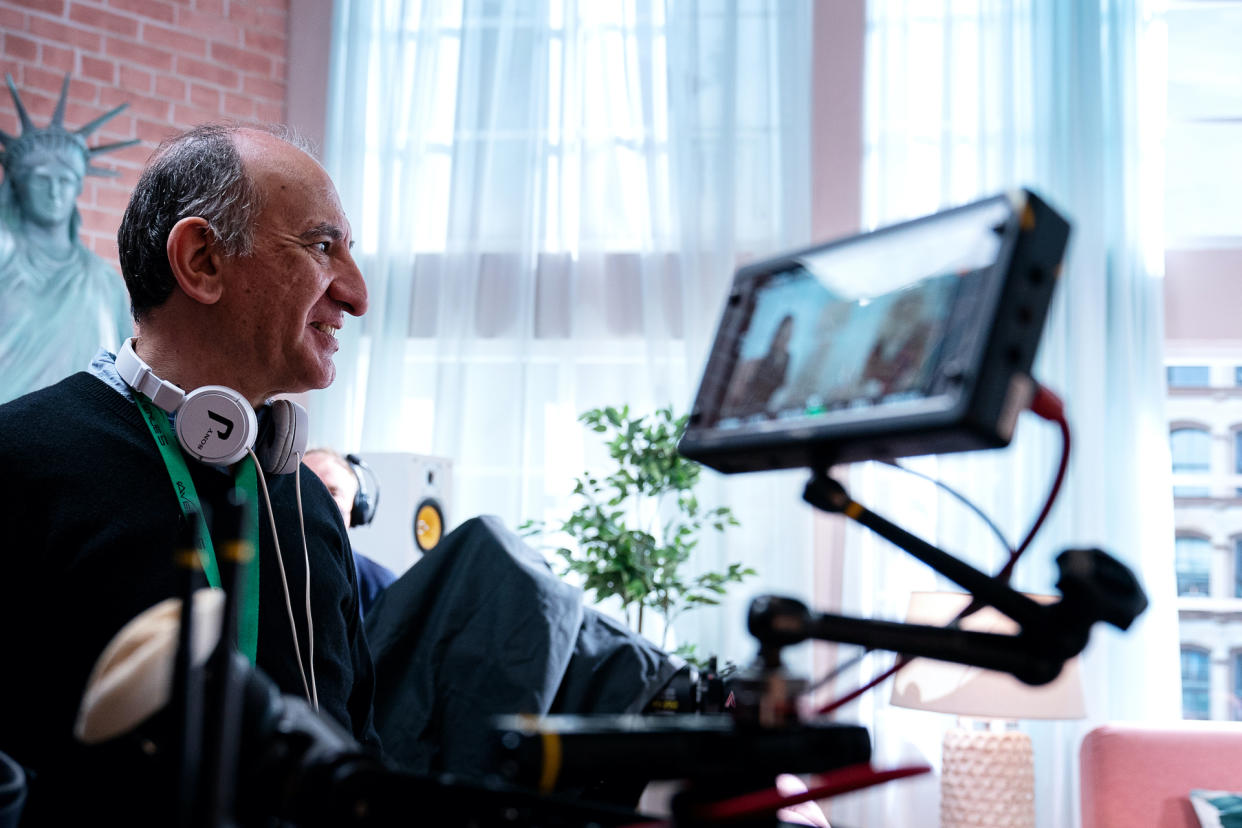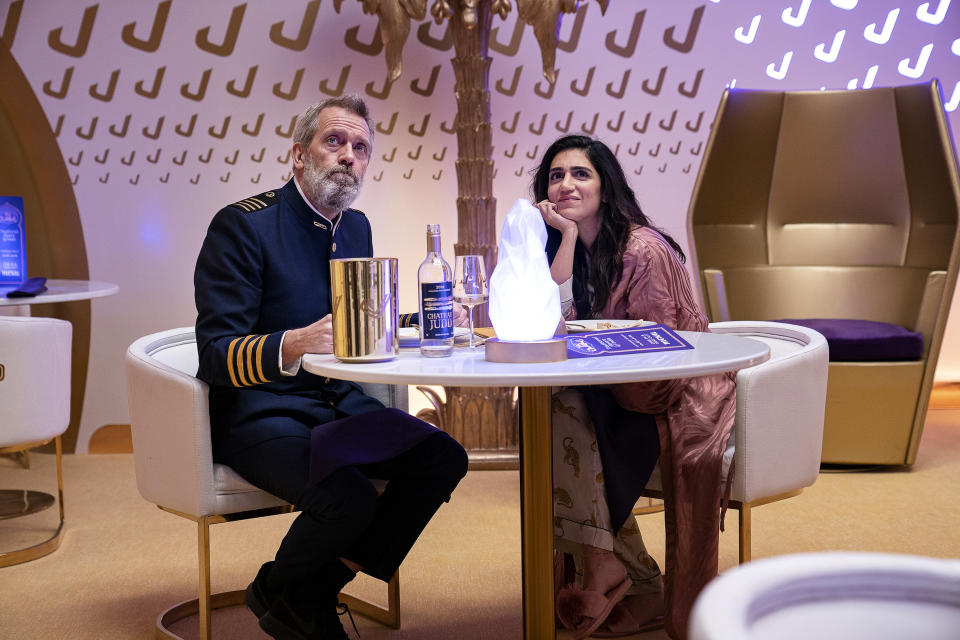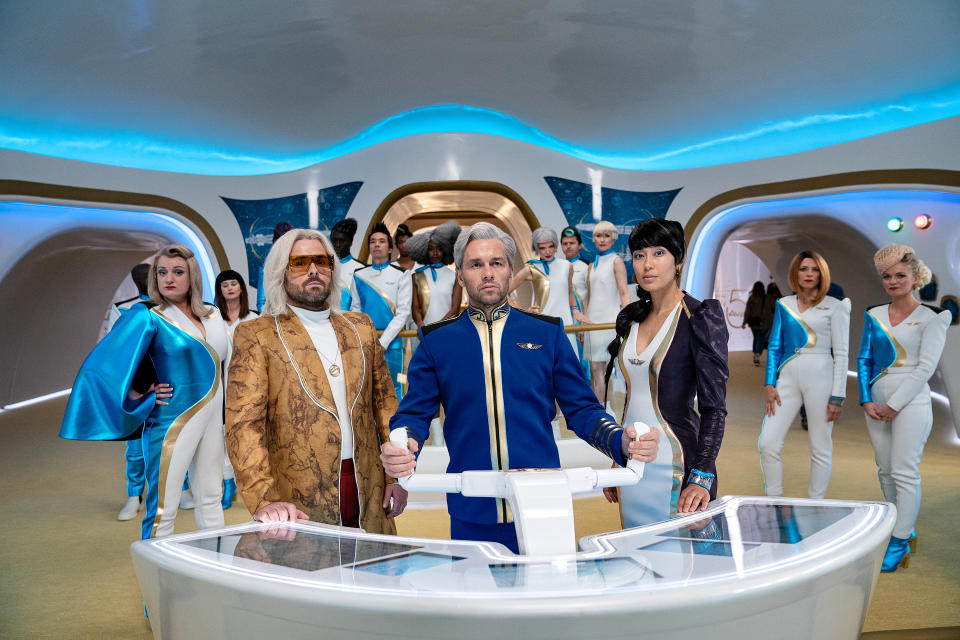Armando Iannucci on How the Pandemic Influenced Season 2 of ‘Avenue 5’

- Oops!Something went wrong.Please try again later.
- Oops!Something went wrong.Please try again later.
While the plot of “Avenue 5” revolves around an ill-fated luxury space cruise, captained by a man who doesn’t really know how to fly, the show itself went on a bit of a journey to make it to its second season. After being put on pause during the early stages of the COVID-19 pandemic, the sci-fi comedy is back with even weirder, pent-up lockdown energy and an even sharper grip on the fail-sons and charlatans who often end up running the world. Creator Armando Iannucci joined the Filmmaker Toolkit podcast to discuss some new additions to the world of “Avenue 5,” changes to the set of its titular ship, and the things that never change about satire regardless of what genre one’s working in.
“It was all about smaller spaces, but more variety. We used our space to create smaller, more intimate settings,” Iannucci said. Some of that intimacy comes out of actually squeezing members of the show’s cast into smaller, more claustrophobic spaces, but some of it also comes out of the new ways Iannucci uses his futuristic setting to rip apart the many, many flaws of modern communication and culture. Noteworthy additions are a fictional prestige version of “Avenue 5” being made for Earth audiences while Avenue 5 is still limping back towards the planet and a Instagram-Live-esque chat show where reactions drown out the news. The shifts in setting keep Season 2 from feeling smaller, except in all the ways that Iannucci wants it to feel like fads and egos keep us from focusing on larger problems at hand. The result keeps the the world of the show (and many of the characters) delightfully petty, while still offering up new challenges that Captain Ryan (Hugh Laurie) and his crew will still try their best to muddle through.
More from IndieWire
Listen to the entire discussion below or read on for excerpts from the conversation. To hear this and more conversations with your favorite TV and film creators, subscribe to the Toolkit podcast via Apple Podcasts, Pocket Casts, Spotify, or Overcast.
Partial Transcript Highlights Below:
Armando Iannucci on how “Avenue 5” changed between Seasons 1 and 2
If Season 1 is about all the stuff going on outside the ship — things/corpses rotating around them — Season 2 is about what’s going on inside, really. Because I think that that shared experience of lockdown, where we’re stuck with people for some time and trying to fill the day, we had much more to draw from of that experience in Season 2, because that’s precisely what they’re all going through on the ship. So [the show] became much more real and it was about the reality of it, in a strange way. I know the storylines involve cannibalism and all sorts of things. But I wanted it feel more claustrophobic. In fact, you know, you shouldn’t overtly notice it, but when we came back for Season 2 the corridors went a little bit narrower. There was more mess, you know, that idea of just people had stopped clearing things up.
In Season 1, people are walking about in their holiday clothes as if they’re on their way to do something. In Season 2, the note I gave was, ‘Imagine you’re stuck at an airport and there’s no sign of the flight.’ People are just sitting, playing cards or chatting. But it’s not people running around excited because they’re on holiday. It’s people waiting. You’re not gonna go to the spa for eight years, you know? Story-wise, I wanted to look at the psychological progression with the characters rather than events happening to them. It’s more about ‘How do they respond to this general situation? And where does that take us?’
In Season 1, after we’d done a take and there’d be 50 background artists, people would come on and clean up the carpets and so on before we did the next take. This time I remember saying to them, ‘No, stop, just leave that mess, leave all the footprints.’ You know, I just wanted the location to look like it was being well and truly lived in. I gave the note that people needed to make the rooms their own. Now they’re no longer hotel rooms that you have to leave the way you found them. If you want to paint them, paint them, you know? If you want to put things up on the wall, put things up on the wall. If you want to put things outside, then do that.

Nick Wall/HBO
Iannucci on the Avenue 5 series now streaming in the world of “Avenue 5”
We changed the lighting. We changed the costumes and everything. We gave the dressing on set a different look and the way the sound was recorded — I don’t know the technical term, but it’s limited so that it’s more pump-y and the music behind it will pump out when there’s no dialogue and then recede when there is dialogue. And so it’s slightly more punchy and [has] just slightly different lenses, a bit more flare and grade in them and the aspect ratio was slightly different. It’s just that we wanted that idea that, you know, a big budget had been thrown at it, even though the dialogue could have done with a bit of a rewrite. I think with all these big shows, the things that they’d never spent money on was the script. We’ve got this star, we’ve got this amazing location, we’ve got this soaring music, we’ve got this top director. You could at least have spent a bit more time getting the dialogue a bit better.

Nick Wall/HBO
Iannucci on Refining Comedy Through Rehearsals
We have a kind of workshop period with the cast and the writers about two weeks before we shoot. So we’ll read the script, but we’ll put the script to one side and we’ll work through the ideas just to see what else comes up or we’ll take a scene and talk about it a bit and think what else could there be happening in this and who have we forgotten about and how can we bring them in? What’s a funny way of bringing them, all of that. And similarly with any of the guest performers, we’re encouraging them to come with some thoughts in advance about how they see them.
So we might do a day of just looking at the whole Jud/Iris, or, you know, the whole Zara setup, or another day we might do the whole Ryan/Billy setup, you know? Again, because of COVID, we had to be mindful of how many people were in the room for the day. That was one way of doing it and because we’d broken up people into smaller units within those stories, we’re all engaging with each other, but spending more time, you know, Jud with Mads now. It did mean that we were able to rehearse it in little discrete blocks with those people. And as the season progresses, you do get the gang all back together again.
The Filmmaker Toolkit podcast is available on Apple Podcasts, Spotify, Overcast, and Stitcher. The music used in this podcast is from the “Marina Abramovic: The Artist Is Present” score, courtesy of composer Nathan Halpern.
Best of IndieWire
From 'Reality Bites' to 'Fatal Attraction,' Keep Track of All the Upcoming Film-to-TV Adaptations
7 New Netflix Shows in October 2022 — and the Best Reasons to Watch
Sign up for Indiewire's Newsletter. For the latest news, follow us on Facebook, Twitter, and Instagram.

